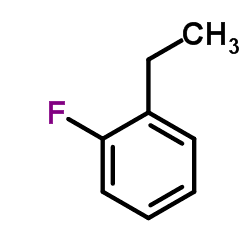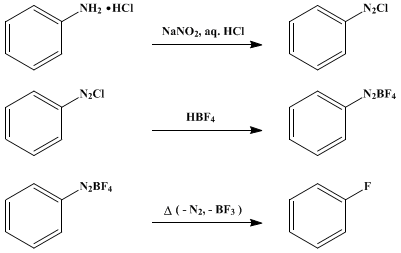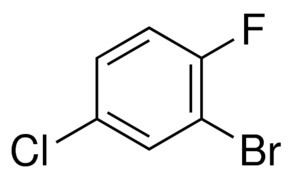Formula C6H5F Melting point 40 °C | Density 1.02 g/cm³ Appearance Colorless liquid | |
 | ||
Related halobenzenes Related compounds | ||
Fluorobenzene is the chemical compound with the formula C6H5F, often abbreviated PhF. This species is a derivative of benzene, with a single fluorine atom attached.
Contents

Properties
Its melting point is -44 °C, which is lower than that of benzene, indicative of the remarkable effect of fluorination on the intermolecular interactions as seen throughout organofluorine chemistry. In contrast, the boiling points of PhF and benzene differ by only 4 °C.
Preparation
On the laboratory scale, PhF is conveniently prepared by the thermal decomposition of the benzenediazonium tetrafluoroborate
PhN2BF4 → PhF + BF3 + N2
According to the procedure, solid [PhN2]BF4 is heated with a flame to initiate an exothermic reaction that affords two volatile products, PhF and BF3, which are readily separated because of their differing boiling points.
History

PhF was first reported in 1886 by O. Wallach at the University of Bonn, who prepared the compound in two steps, starting also with a phenyldiazonium salt. The diazonium chloride was first converted to its piperidinide, which in turn was cleaved using hydrofluoric acid.
[PhN2]Cl + 2 C5H10NH → PhN=N-NC5H10 + [C5H10NH2]ClPhN=N-NC5H10 + 2 HF → PhF + N2 + [C5H10NH2]F
An interesting historical note: in Wallach’s era, the element fluorine was symbolized with “Fl”. Thus, his procedure is subtitled “Fluorbenzol, C6H5Fl”.
The technical synthesis is by the reaction of cyclopentadiene with difluorocarbene. The initially formed cyclopropane undergoes a ring expansion and subsequent elimination of hydrogen fluoride.
Reactions
PhF is a relatively inert compound because the C–F bond is very strong. PhF is a useful solvent for highly reactive species, but a metal complex has been crystallized.
